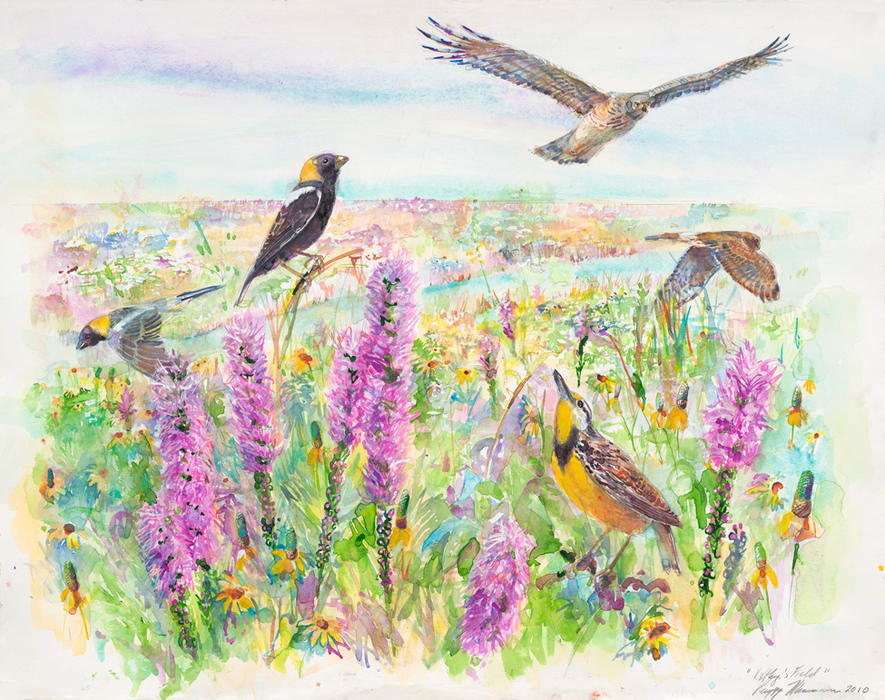
The slogan “The Prairie State” on some Illinois license plates refers to a landscape that has mostly vanished in the Midwest. But an upcoming art exhibition and colloquium “Seeing the Prairie” is a varied exhibit of watercolors, photography, and text that celebrate the beauty and diversity of planted prairie restorations at Fermilab in Batavia, IL. The exhibit, which opens July 27, seeks to bring people’s attention to this highly-threatened landscape of wildflowers and grasses, and help secure its future. It also aims to help people “see” this community of plants, animals, and other members of the prairie community in new ways.
According to The Nature Conservancy, prairies are the most imperiled ecosystems today, and the least protected habitats on Earth. Prairies are key players in clean water, flood control, carbon sequestration, and providing crucial animal habitat. Prairies also offer inspiration for writers, poets, artists, musicians, photographers and other creatives.
It’s this prairie inspiration that makes the “Seeing the Prairie” exhibit so rich and diverse. Artists represented include Cindy Crosby, Heeyoung Kim, Peggy Macnamara, Todd Serrano, Dean Willis, plus photographs by many of the talented people that give their time to Fermilab’s Natural Areas as volunteers.
On September 5, 4 p.m., a free public talk in conjunction with the exhibit, “Seeing Prairie,” is scheduled in 1 West, Wilson Hall by Cindy Crosby. Crosby is the author of “The Tallgrass Prairie: An Introduction (Northwestern University Press, 2017) and the forthcoming “Tallgrass Conversations: In Search of the Prairie Spirit” with Thomas Dean. She is a steward supervisor at The Morton Arboretum’s Schulenberg Prairie in Lisle, IL, and a steward at Nachusa Grasslands, a Nature Conservancy site in Franklin Grove, IL.
Fermilab’s tallgrass prairies are worthy of celebration. In 1975, through vision of Dr. Robert Betz, an original nine-acre prairie was planted on site. Today, the 6,800 acre campus of “America’s particle physics and accelerator laboratory,” includes almost 1,000 acres of prairie. The prairie today is vibrant and healthy through the efforts of numerous volunteers in the Fermilab Natural Areas program, led by Fermilab’s dedicated ecologist Ryan Campbell.



